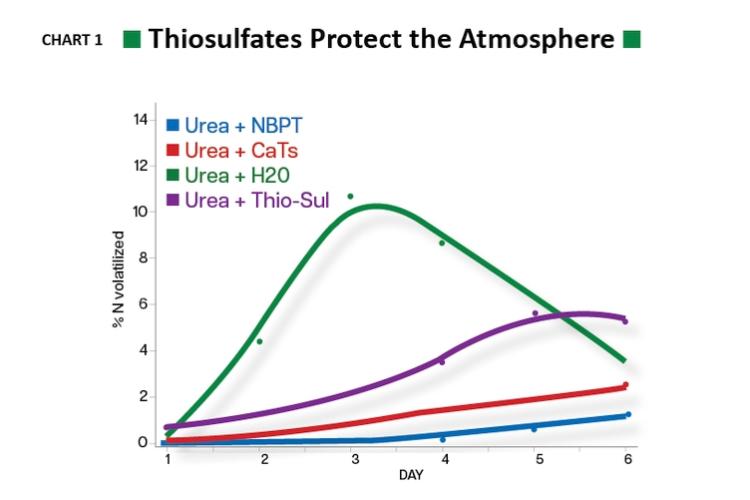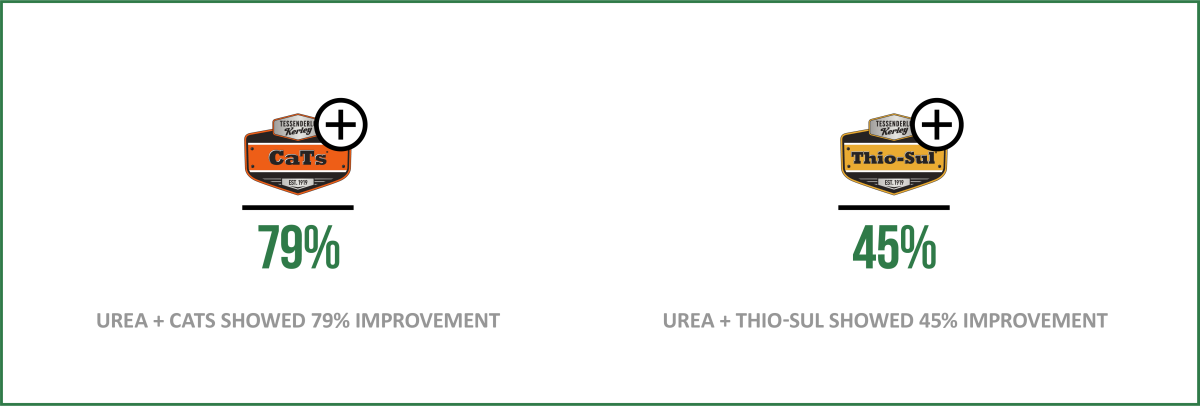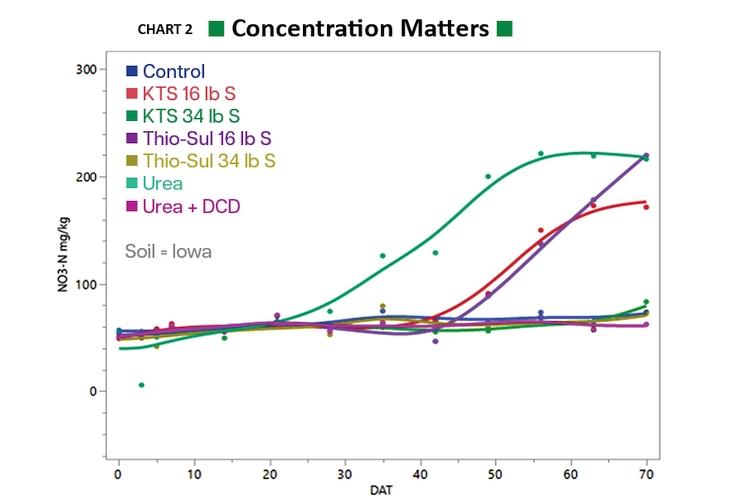
Protect Your Nitrogen Investment with Thiosulfate Fertilizers
It is essential for growers to find ways to protect the nitrogen they apply. In the webinar, “Protecting Nitrogen with Thiosulfates: A New Look at a Legacy Product,” Crop Vitality’s Manager of Agronomy Zack Ogles, Ph.D., said that concentrated applications of thiosulfates can help growers protect their nitrogen investments.
Collaborative studies from Crop Vitality and Auburn University show that thiosulfates inhibit nitrification while providing essential sulfur. This is increasingly important as farmers push for higher yields on less acreage and have increased plant populations. “What that equates to is the need for increased rates of sulfur to feed the plants and produce higher yields,” Ogles added.

There is also an important environmental component. “Any way that we can reduce nitrate leaching, ammonia volatilization, and potentially nitrous oxide emissions is beneficial to the environment and to growers,” Ogles said.

Unlike other forms of sulfur, thiosulfates are in an intermediate state of oxidation. This means that the oxidation of the thiosulfate ion generates acidity in the soil, which lowers pH and can increase nutrient availability.


Thiosulfates have also been shown to reduce ammonia volatilization (see Chart 1). In one study with liquid urea and NBPT (N-(n-Butyl)thiophosphoric triamide), a well-known product that’s marketed as a urease inhibitor, the NBPT kept volatilization very low when compared to urea applied alone. But the study also showed that urea applied with Crop Vitality’s calcium thiosulfate (CaTs®) performed statistically as well as NBPT over the six-day period.
“It was surprising to see that a product (CaTs) providing nutrient value like calcium and sulfur could compete with a product specifically marketed to reduce ammonia volatilization,” Ogles said, noting that Crop Vitality’s ammonium thiosulfate (Thio-Sul®) also showed a significant reduction of ammonia volatilization.


A joint study conducted by Auburn University and the Crop Vitality from 2017-2023 revealed that concentrated applications of thiosulphates play a key role in nitrification inhibition. When urea solution was applied alone at a rate of 120 pounds of nitrogen per acre, the urea quickly hydrolyzed and converted to nitrate nitrogen. When thiosulfate sulfur or DCD (a commercially available nitrification inhibitor) was added to the urea solution, the rate of nitrification was effectively reduced.
When a larger amount of thiosulfate sulfur (34 pounds per acre) is used with urea, “we saw extremely good nitrification inhibition,” Ogles said.
Through these studies, it is evident that thiosulfates are a key component for limiting nitrate leaching and ammonia volatilization. Crop Vitality will continue to delve into the impact of how thiosulfates add value for growers and how this value translates to achieving long-term environmental efforts. Ogles said, “Ongoing studies will be used to provide details on how thiosulfates affect soils, and as we obtain results we will report our findings and continue to provide stewardship.”
Crop Vitality's Tessenderlo Kerley line of thiosulfates include:

Thio-Sul
- Ammonium thiosulfate (12-0-0-26S)
- Helps improve nitrogen-use efficiency
- Provides quickly available and extended sulfur release
- Can be applied through most irrigation systems
Learn more

KTS
- Potassium thiosulfate (0-0-25-17S)
- Highly soluble and chloride-free solution
- Improves the crop’s ability to cope with drought stress and effectively
utilize nitrogen - Used to supplement fertility programs where only a defined amount of potassium and/or sulfur is needed per acre
Learn more

CaTs
- Calcium thiosulfate (0-0-0-10S-6Ca)
- Conditions soils by leaching harmful salts and improving water infiltration
- Does not contain nitrogen or chlorides
- Can be tank mixed with liquid urea-ammonium nitrate (UAN) or liquid urea
- Improves the density, firmness, and appearance of fruits, vegetables, and nuts
Learn more
Written by Dr. Zack Ogles, Crop Vitality, Tessenderlo Kerley Manager of Agronomy
Contact a Specialist